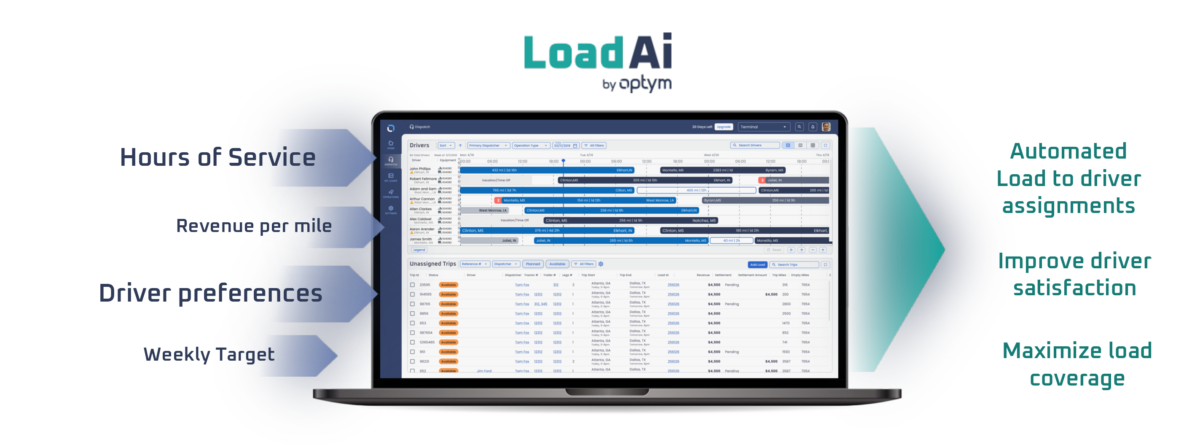
Automation, artificial intelligence and machine learning are all hot topics across the logistics industry. Companies dream of running seamless operations, and new technologies often promise to fulfill that dream.
As with all good things, however, sometimes less is more.
“Artificial intelligence is a huge buzzword. At the core of it, there is nothing artificial about our intelligence,” Optym Product Lead Danny Zeenberg said. “What we are really trying to do is make computer-assisted decisions. We’re not trying to tell people what to do.”
Zeenberg emphasized the differences between Optym’s AI-enabled transportation solutions and trending AI tools like ChatGPT. Attention-grabbing technologies like ChatGPT have a significant – and common – drawback: not providing accurate and verifiable information.
Optym’s solutions, including LoadAI for truckload, sidestep this issue by creating a balance between human input and artificial intelligence, as opposed to going all-in on the latter.
“The way I look at it, it is a harmonization of man and machine,” Optym Chief Strategy Officer Chris Torrence said. “We never want to have this fallacy that the human ability to understand the heavy amount of nuance in this industry is going away.”
While humans are well-equipped to understand the ins and outs of the physical world, machines are better designed to handle complex mathematical problems. Optym’s goal is to utilize both humans and machines to their fullest potential by automating the often tedious tasks that can be handled without emotional or social intelligence.
LoadAI, for example, creates a pathway for automated dispatching, essentially optimizing driver assignments based on four different data points: hours of service, revenue per mile, driver preferences and weekly targets.

The Load AI solution is able to instantaneously analyze several different pieces of data to reveal the best driver matches and create more efficient outcomes. Computers are able to do this with a level of speed and accuracy that humans cannot, thereby creating an avenue for better asset utilization and improved profitability.
By using AI to simplify driver assignments, Optym has essentially given carriers the ability to maximize load coverage and improve driver satisfaction. The tool does not, however, aim to replace human dispatchers.
There are certain nuances that machines cannot understand, like the cascading impacts of a flat tire or driver emergency. People remain invaluable in solving the unanticipated problems that arise in the course of everyday operations.
“You will never build all the possible scenarios in trucking into these solutions,” Zeenberg said. We approach this from the human-centric side of assisted decision making instead of complete automation and lack of control.”






